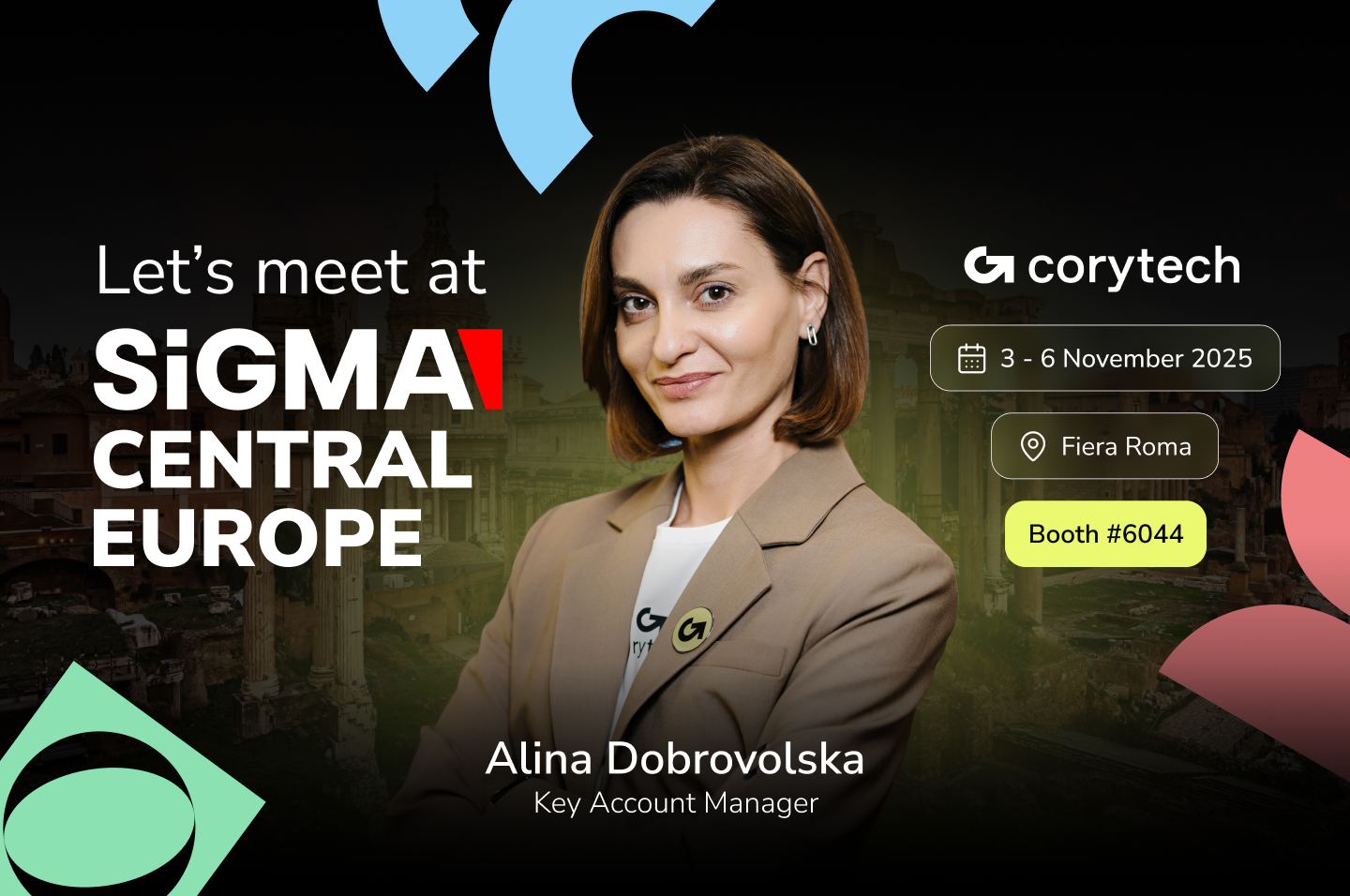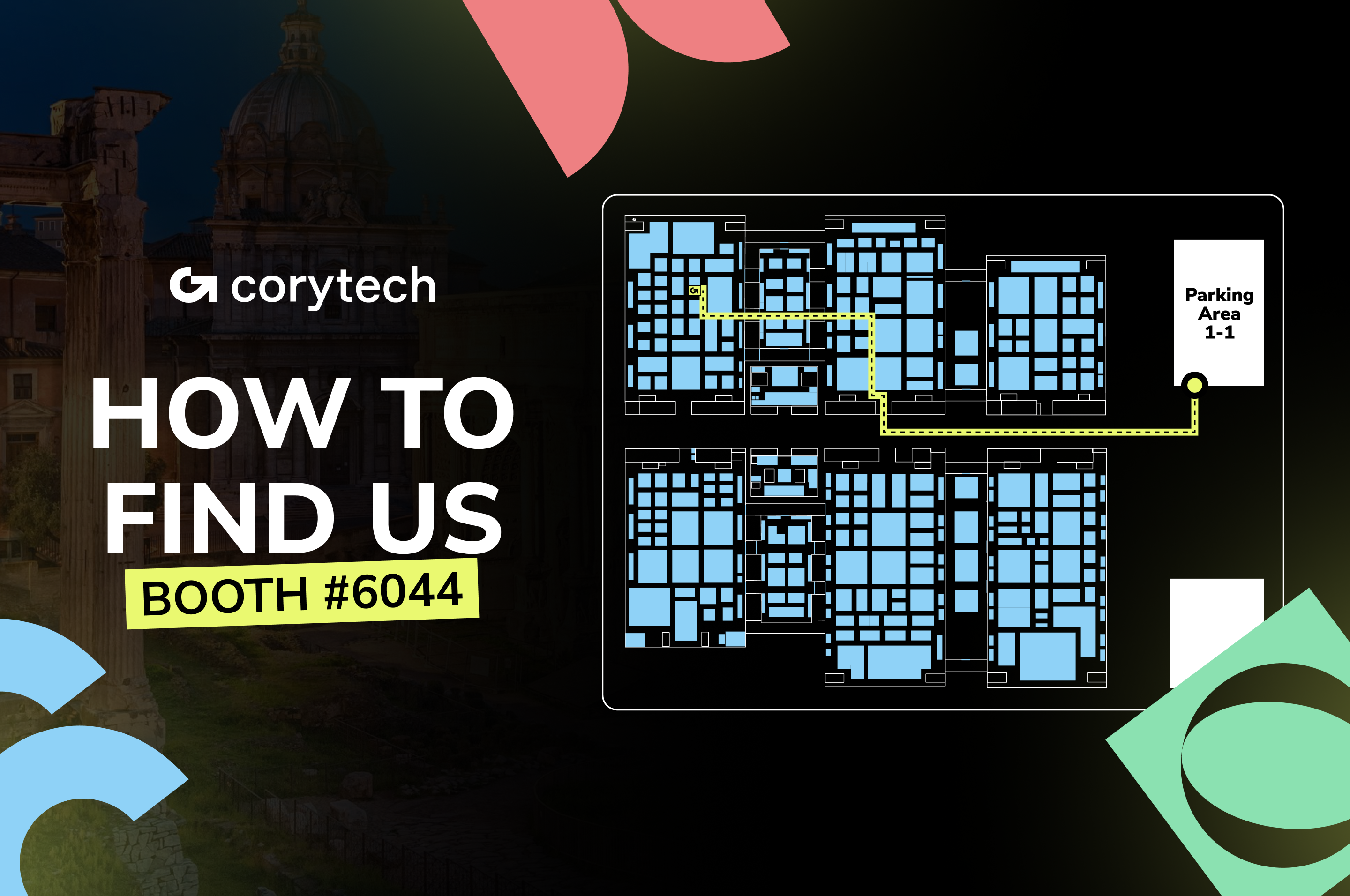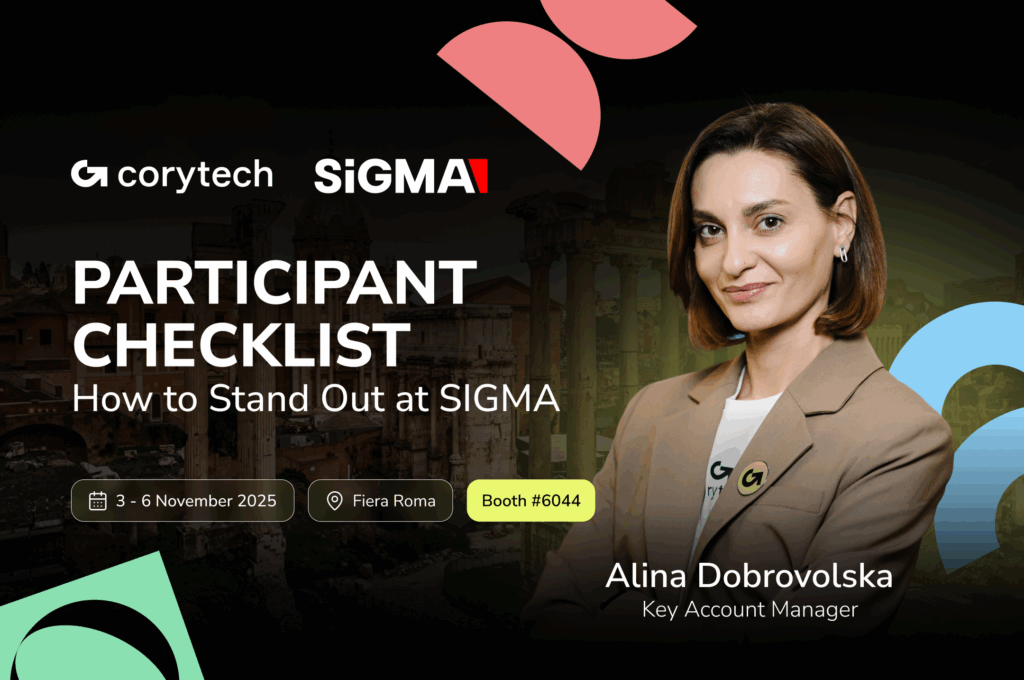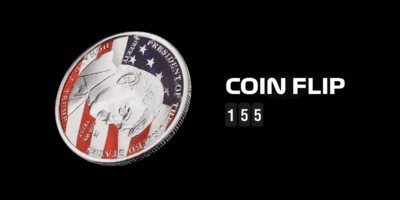Author: Alina Dobrovolska, Key Account Manager at Corytech — Book the meeting
Attending a large industry event as a company representative is always a bit stressful. In such situations, your results depend on how prepared you are and how quickly you can connect with people.
I created this checklist specifically for these cases — for example, while preparing for SiGMA Central Europe. This premier event will bring together the brightest minds redefining payments, digital assets, and gaming technology — and Corytech will be right at the heart of it.
This piece gathers simple tips to help you get the most out of the event and make valuable new contacts. I hope it helps you structure your approach, prepare in advance, and make every minute at the tradeshow count — to find new clients, partners, and make your brand visible even without your own exhibition space.
- Set clear goals. Define specific KPIs for yourself — for example, to gain 15 new contacts with potential clients.
However, it’s important to remember that networking is always a long-term game: you never know which connections will bring results. So don’t focus only on pre-scheduled meetings; stay open to new encounters.
Also, don’t forget about your current clients: meet them, say hello, and casually maintain the relationship — it’s a great way to keep a pulse on their satisfaction with your services.
- Prepare your elevator pitch. This is a short 30-second presentation that clearly explains who you are, what you do, and the value you provide. In a crowded event, this is especially important, as you won’t have much time to hold your conversation partner’s attention.
- Schedule meetings in advance. Many key participants plan their agendas even before the event begins. Use LinkedIn or the event app to arrange 15-minute coffee meetings or networking sessions.
- Download the summit app. Most events have a mobile app that includes venue maps, schedules, bonus programs, and even the ability to find contacts of other participants. This helps you navigate quickly and saves time searching for the right locations.
- Consider an optimal accommodation location. Pay attention to where your hotel or apartment is located: how quickly can you get to the event space, is there convenient public transport, and how busy are the roads during peak hours. Ideally, stay close to the conference venue or in an area with good transport connections. This will save time and energy, help you avoid traffic, and ensure you don’t miss key sessions.
- Plan which events and sessions to attend. Large summits and tradeshows often have dozens of parallel talks, panels, and workshops. Without a plan, it’s easy to get lost or miss important sessions. Study the program in advance, select priority sessions, and mark them in your calendar. This helps you stay up to date with industry news and trends while also better managing your free time for networking, breaks, or meetings with potential partners.

Networking and Personal Brand
- Choose clothing that speaks for you. Instead of standard logo T-shirts, consider interactive options: for example, a QR code that links to your website, Telegram bot, or LinkedIn profile. This creates a “wow” moment and makes it easy to move from an introduction to online interaction.
- Use your badge as advertising space. Add a small QR code or a short company slogan under your name. It’s a small detail, but people remember you when they see something unusual, even in such minor elements.
- Attend informal activities. Afterparties, coffee breaks, and networking sessions are often where real business opportunities arise. It’s harder to have a genuine conversation during formal presentations, but in informal settings, connections happen naturally.
- Take selfies with new business contacts. Photos help reinforce associations and make follow-up messages warmer. When you message someone after the event and include a shared photo, it’s easier for them to remember you and your conversation.
- Bring business cards, but also add contacts to LinkedIn. At large events, you might collect dozens of cards that can easily get lost. It’s much more effective to immediately add the contact to your phone or social network — this creates a “live” channel for future communication.
- Take notes immediately after meetings. Jot down 2–3 key points about the person, their company, and any agreements. Otherwise, impressions and faces get mixed up the next day, and you risk losing an important contact.
How to Stand Out Among Hundreds of Participants
- Give something unusual. Merchandise isn’t just a souvenir — it’s a way to create positive emotions. If you know the eventvenue has poor ventilation, prepare branded fans in advance; if charging points are often limited, bring small power banks. People appreciate items that are immediately useful.
- Create a small “hook.” This could be a funny souvenir, a playful element, or even your own hashtag. People remember creativity, and it greatly increases the chances that they will recall you after the event.
Content During the Tradeshow and Conference
- Share “live content” and go live from the event. Posting 2–3 short stories about where you are, who you’ve met, or what insights you’ve gained creates a sense of presence. This works well for both personal accounts and corporate social media.
- Prepare content templates in advance. Create several ready-made layouts for stories and posts in your corporate colors. During the event, you’ll only need to add photos or short text, saving time in the fast-paced environment.

A major tradeshow is a marathon of networking and opportunities. With a plan and active engagement, you can find clients, partners, and make your brand visible even without a booth.
I’ll also be attending SiGMA Central Europe in Rome. If you’re planning to go, book the meeting — we can arrange to meet and chat in person.




